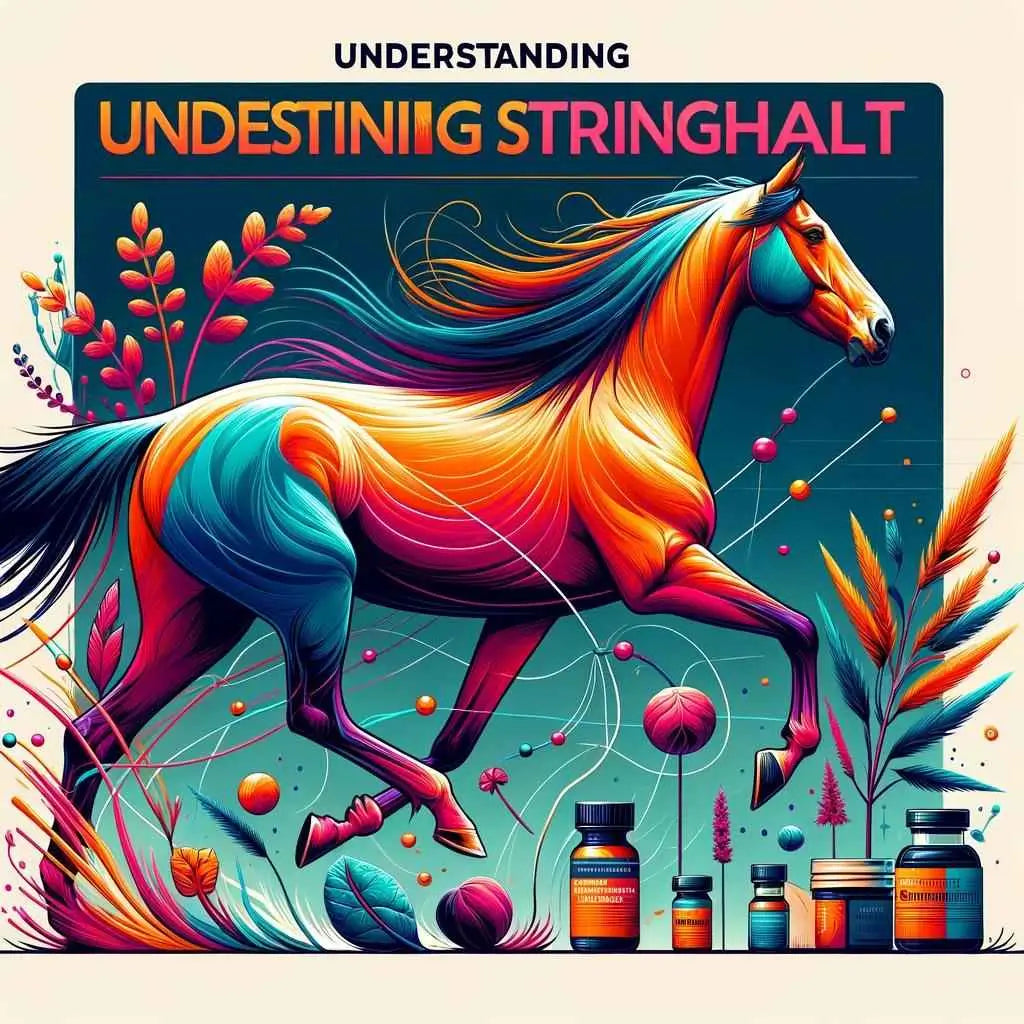| Type of Stringhalt | Characteristics | Treatment Options | Riding Considerations |
|---|---|---|---|
| Classical Stringhalt | Affects one hindlimb, can occur without clear cause, sometimes follows injury. | Diet supplements (B1, E, C vitamins), surgical intervention in stubborn cases. | Mild cases may not significantly impact performance; severe cases can limit activity. |
| Bilateral (Australian) Stringhalt | Affects both hindlimbs, linked to ingestion of toxic plants, seen in outbreaks. | Remove source of toxicity, diet supplements, recovery can take 6-18 months. | More severe impact on movement; competitive riding and jumping can be significantly affected. |
| Symptoms and Diagnosis | Symptoms vary from mild jerky gait to extreme hyperflexion; diagnosed based on clinical signs, sometimes using electromyography. | ||
| Living with Stringhalt | Focus on what the horse can do; with proper management, horses can lead fulfilling lives. Adjust expectations and explore alternative activities. | ||
Understanding Stringhalt in Horses: A Comprehensive Guide
Welcome to our deep dive into stringhalt in horses, a condition that might sound like a dance move but is far from it. Imagine you're enjoying a peaceful ride, and suddenly, your horse decides to audition for a high-kick competition. This might give you a brief "America's Got Talent" moment, but it's likely a sign of stringhalt, not a newfound talent.

Stringhalt, also whimsically known as springhalt, is a neuromuscular condition that turns your horse's walk into something out of a Monty Python sketch. It's characterized by an exaggerated, involuntary flexion of one or both hindlimbs. And while it might look like your horse is just being overly dramatic about stepping over a tiny puddle, stringhalt is a genuine concern that can affect any horse, regardless of breed or age.
Spotlight on the Two Main Culprits: Classical and Australian Stringhalt
The plot thickens with our main characters: Classical and Bilateral (Australian) stringhalt. Classical stringhalt is like that unpredictable friend who shows up uninvited. It typically affects only one hindlimb and can appear out of nowhere, often without a clear cause. On the flip side, Australian stringhalt is a bit more of a social phenomenon, usually affecting both hindlimbs and often seen in multiple horses within the same area. Think of it as the unwelcome party guest that doesn't come alone.
Researchers link Australian stringhalt to toxic plants like flat weed. Yes, something as innocent-looking as a dandelion can wreak havoc on your horse's nervous system. It's a reminder that looks can be deceiving, especially in the plant world.

The Dramatic Symptoms: From High-Kicks to Bunny Hops
Diagnosing stringhalt involves a bit of detective work, with symptoms ranging from a mildly jerky gait to something resembling a bunny hop. It's more than just an odd quirk; these symptoms can significantly impact a horse's well-being and performance. In severe cases, it might even lead to muscle atrophy. And let's be honest, no one wants to see their beloved horse go through that.
If you're now picturing your horse hopping around like a kangaroo on a pogo stick, you're on the right track. But fear not, with the right management and care, horses with stringhalt can continue to live happy and productive lives. It's all about understanding the condition and working closely with your vet.
Can Horses with Stringhalt Still Be Ridden?
The million-dollar question: Can a horse with stringhalt still be ridden? The short answer is, it depends. It's like asking if you can still dance after stubbing your toe. Mild cases might not significantly impact a horse's ability to perform light activities, but more severe cases could turn every step into a painful ordeal. It's all about assessing the severity and making the best decision for your equine buddy.
Stringhalt in the Competitive Arena
For those dreaming of competitive glory, stringhalt can be a bit of a stumbling block. In disciplines like dressage, where precision and grace are the names of the game, a high-kicking hind leg can be more of a curse than a blessing. It's the equivalent of tripping on the red carpet; it gets attention, but not the kind you want.

But it's not all doom and gloom. Horses with mild stringhalt might still find their spotlight in the less rigidly judged arenas. It's about finding the right fit and not letting stringhalt define your horse's capabilities. Remember, every horse has its stage, even if it's not the dressage court.
The Progression: A Slippery Slope or a Manageable March?
Is stringhalt a one-way ticket to trouble town? Not necessarily. The condition can be progressive in some cases, especially if not managed properly. Think of it as letting a small leak turn into a flood. Addressing the underlying cause, particularly in the case of Australian stringhalt, can sometimes lead to significant improvement or even resolution of symptoms.
Imagine your horse's nervous system as a complex network of highways. Now, if there's a roadblock (like those caused by toxic plants), it's going to cause some traffic jams. Removing these roadblocks can help clear the way and get things moving smoothly again.

Jumping with Stringhalt: A Leap of Faith?
So, can horses with stringhalt jump? Yes and no. It's like asking someone with a leg cramp to hurdle—it might be possible, but it's not going to be pretty. Jumping requires precision and coordination, two things that stringhalt can significantly impact. For horses with mild symptoms, some light jumping might still be on the table, but it's essential to prioritize their comfort and safety above all else.
Treatment and Management: Navigating Through the Weeds
Finding a cure for stringhalt is like trying to find a needle in a haystack—a very large and complex haystack. While there's no one-size-fits-all solution, management strategies can make a world of difference. For starters, getting your horse away from those pesky toxic plants is a no-brainer. Supplementing their diet with vitamins like B1, E, and C might also lend a helping hoof.
In more stubborn cases of classical stringhalt, surgical intervention may be considered. It's a bit like rebooting your computer in hopes it'll fix a glitch. The results can vary, but it's an option worth discussing with your vet.

Living with Stringhalt: The Long Haul
Living with a horse affected by stringhalt requires patience, understanding, and a bit of creativity. It's not so much a sprint as it is a marathon. The key is to focus on what your horse can do, rather than what they can't. Whether it's leisurely rides in the countryside or finding alternative competitions that accommodate their unique gait, there's a world of possibilities out there.
Remember, every horse is an individual, and with the right care and management, horses with stringhalt can continue to lead fulfilling lives. It's about adjusting your expectations and finding new ways to enjoy the bond with your equine friend.

Parting Thoughts: A Silver Lining
Stringhalt may seem daunting at first, but it's not the end of the road. With advances in veterinary medicine and a better understanding of the condition, managing stringhalt is more feasible than ever before. It's a challenge, sure, but it's also an opportunity to learn and grow with your horse.
The journey with a stringhalt-affected horse is a testament to the resilience and bond between horse and rider. It's about taking the good with the bad and finding joy in the journey. After all, isn't that what horse ownership is all about?
For more information on stringhalt and how to manage it, don't hesitate to explore reputable sources like UC Davis's overview on stringhalt or join discussions on platforms such as Horse and Hound forums. Knowledge is power, and in the case of stringhalt, it's the first step towards making informed decisions for your horse's health and happiness.
Final Words
In wrapping up our trot through the world of stringhalt, it's clear that while the condition presents challenges, it also offers opportunities for growth, learning, and deepening the bond with our equine companions. So, keep your spirits high and your horses’ kicks higher (figuratively, of course), and remember that with the right approach, stringhalt is just another hurdle to overcome together.
Interested in exploring products that can support your horse's journey? Check out Just Horse Riders' collection for a range of options tailored to meet your horse's needs. From jodhpurs and boots to supplements and stable rugs, find everything you need to keep your horse comfortable and happy.
What causes stringhalt in horses?
Stringhalt can arise from various factors. Classical stringhalt may develop without a clear cause, sometimes following an injury. Bilateral (Australian) stringhalt is often linked to the ingestion of toxic plants like flat weed, affecting the horse's nervous system.
Can you ride a horse with stringhalt?
Yes, but it depends on the severity of the condition. Horses with mild stringhalt may not be significantly impacted and can perform light activities. However, severe cases can cause discomfort or pain, making riding inadvisable.
Is stringhalt in horses progressive?
Stringhalt can be progressive if not properly managed or if the underlying cause, such as exposure to toxic plants, is not removed. In some cases, removing the source of toxicity and appropriate management can lead to improvement.
Can horses with stringhalt jump?
While mild cases of stringhalt might not prevent a horse from jumping, the condition affects the horse's control and coordination, making jumping a challenge, especially in more severe cases. Prioritizing the horse's comfort and safety is essential.




